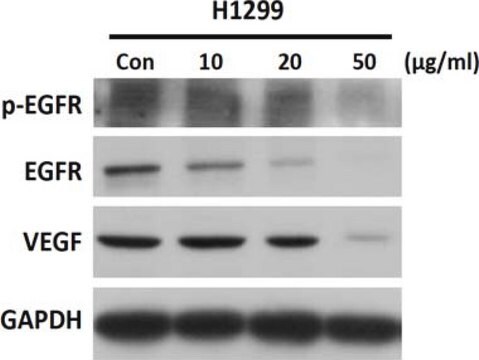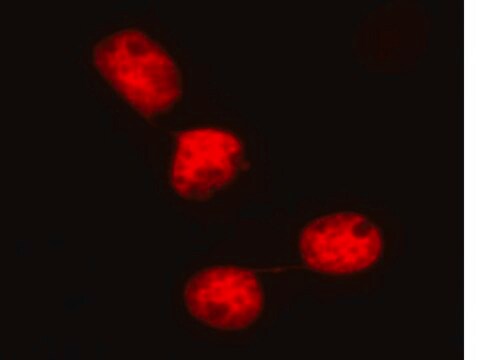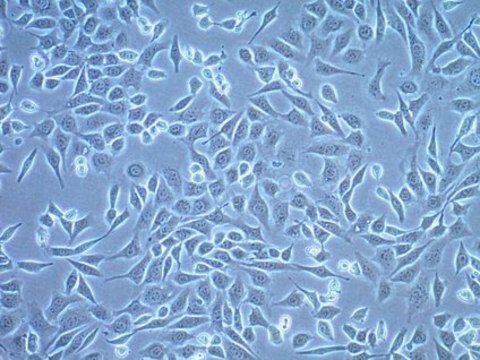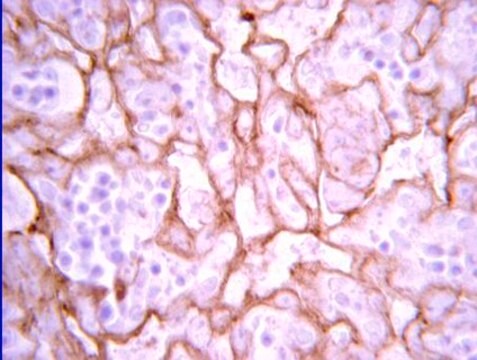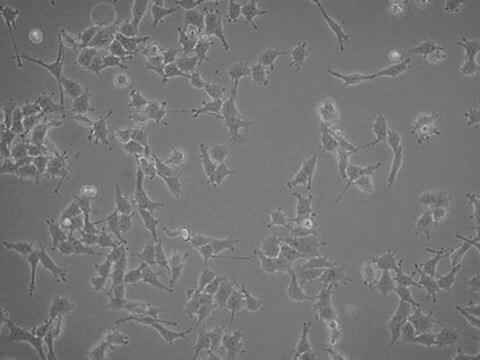SCC462
RMS RET Melanoma-sorted Mouse Cell Line
Mouse
Synonim(y):
Linia komórkowa RMS, Linia komórkowa czerniaka RET, Linia komórkowa czerniaka posortowana według RET
About This Item
Polecane produkty
Nazwa produktu
RMS RET Melanoma-sorted Mouse Cell Line,
pochodzenie biologiczne
mouse
Poziom jakości
opakowanie
vial of ≥1X10⁶ vial
producent / nazwa handlowa
Millipore
metody
cell based assay: suitable
cell culture | mammalian: suitable
Warunki transportu
liquid nitrogen
temp. przechowywania
−196°C
Opis ogólny
Zastosowanie
- Każda fiolka zawiera >1X106żywych komórek.
- Komórki sBT-RMS zostały zweryfikowane jako pochodzące od myszy i są ujemne pod względem skażenia międzygatunkowego u ludzi, szczurów, chomików chińskich, chomików syryjskich złocistych i naczelnych, zgodnie z oceną panelu Contamination Clear firmy Charles River Animal Diagnostic Services
- Komórki uzyskały wynik ujemny w kierunku chorób zakaźnych w porównaniu z panelem Mouse Essential CLEAR firmy Charles River Animal Diagnostic Services.
- Komórki uzyskały wynik ujemny w kierunku mykoplazmy.
Cechy i korzyści
Opis wartości docelowych
Przechowywanie i stabilność
Inne uwagi
Oświadczenie o zrzeczeniu się odpowiedzialności
Kod klasy składowania
12 - Non Combustible Liquids
Klasa zagrożenia wodnego (WGK)
WGK 3
Temperatura zapłonu (°F)
Not applicable
Temperatura zapłonu (°C)
Not applicable
Certyfikaty analizy (CoA)
Poszukaj Certyfikaty analizy (CoA), wpisując numer partii/serii produktów. Numery serii i partii można znaleźć na etykiecie produktu po słowach „seria” lub „partia”.
Masz już ten produkt?
Dokumenty związane z niedawno zakupionymi produktami zostały zamieszczone w Bibliotece dokumentów.
Nasz zespół naukowców ma doświadczenie we wszystkich obszarach badań, w tym w naukach przyrodniczych, materiałoznawstwie, syntezie chemicznej, chromatografii, analityce i wielu innych dziedzinach.
Skontaktuj się z zespołem ds. pomocy technicznej

